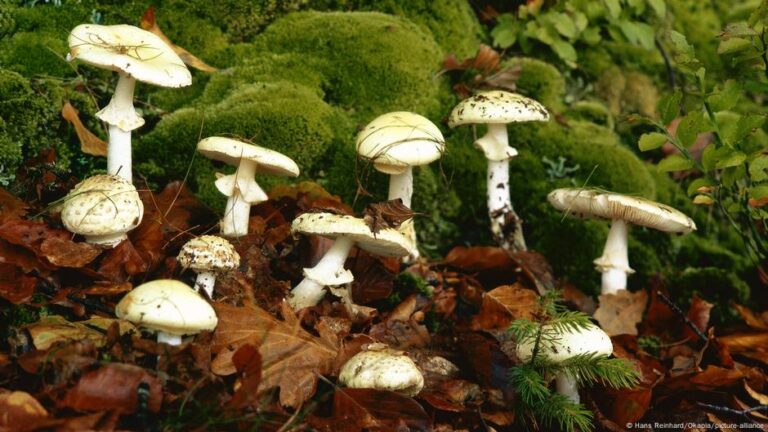A jury in Australia has found Erin Patterson guilty on three counts of murder and one of attempted murder. The murder weapon: Toxic mushrooms.
Prosecutors argued Patterson intentionally served four of her family members with meal portions containing toxic death cap mushrooms in 2023.
Patterson denied being guilty, originally telling police she had used store-bought mushrooms from a supermarket, then an Asian grocer in Melbourne. A search of such stores found no evidence that poisonous mushrooms had ever been sold.
During the trial, Patterson said she may have foraged for the mushrooms but could not say for certain where she had obtained the death caps.
Why are death cap mushrooms so deadly?
Deadly by name and by nature, death cap mushrooms (Amanita phalloides) are full of a highly stable toxin called alpha-Amanitin. The toxin is so stable that it won’t break down when exposed to heat in cooking.
When a death cap is eaten, people don’t usually feel symptoms like nausea, vomiting, and diarrhea until at least 6 hours later.
During this time the alpha-Amanitin toxins are making their way through the bloodstream into organs of the body.
The toxin primarily acts in the liver, where it causes cells in the liver to die. Alpha-Amanitin binds with RNA polymerase-II enzymes, preventing the cells from creating new proteins. Eventually, the liver starts to shut down. Death can occur within 24 hours.
Careful identification required
The Amanita genus of fungi is well-known for their toxic properties. This group include the fairytale “toadstool” commonly known as the fly agaric, death caps, and “destroying angels”. But some other Amanita mushrooms are edible.
Most cases of death cap poisoning are often a case of misidentification — their classic white appearance and domed cap looks like many other types of fungi.
Identification of mushrooms requires a knowledge of different parts of the anatomy: the cap or fruiting body, the gills or spores beneath the cap, and the stipe — or stalk.
While death caps look like many other mushrooms, one defining characteristic is their bad smell.
“They don’t store well at all, unless you dehydrate them. They quickly go very stinky and very nasty,” Brett Summerell, a fungi expert and Chief Scientist at the Botanic Gardens of Sydney, Australia, told DW.
Because of the risk of misidentification by amateurs, it’s usually recommended that foragers go for edible species that cannot be mistaken. Of course, foraging under the supervision of a trained mycologist — a fungi scientist — is usually a safe option.
No death caps in the supermarket
The jury ultimately didn’t find Patterson’s defense — that she mixed up foraged mushrooms in the same container as store-bought ones — believable.
The prosecution argued Patterson knowingly put the toxic mushrooms in the home-cooked lunch and disposed of evidence.
Summerell said the likelihood that death caps could get into store-bought products “is, to be honest, farcical.”
The reason? Death caps only grow next to oak and beech trees.
Death caps, like many fungi, are mycorrhizal, meaning they have a symbiotic relationship with the tree species. Death caps obtain their nutrients from nearby tree roots and return nutrients to the nearby soil.
But because they can only grow at the base of oak and beech trees, it means there’s no chance of them sprouting in a commercial setting, where spores are cultivated in highly controlled conditions — and with no trees in sight.
Australia could get rid of death caps
Death caps aren’t native to Australia, and neither are the oak and beech trees that support them. The trees were first introduced into Australia from Europe in the 19th ecntury, and death caps in the 1960s.
Summerell and other mycologists are now discussing the possibility of removing oak trees in some parts of Australia.
“We have argued that, in Sydney, if it’s at all possible, we should start to think about removing oak trees from some of these suburbs just from the point of view of a public health risk,” said Summerell.
Removing introduced oaks could harbor positive benefits, both from a public health perspective by removing the risk of the top cause of mushroom poisoning, as well as providing more space for native Australian plant life.
Edited by: Fred Schwaller


